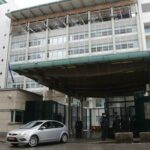

The economy added 209,000 jobs in June, the Bureau of Labor Statistics reported Friday, reflecting a slowdown in the labor market as the Federal Reserve tightens its monetary policy.
The unemployment rate fell slightly to 3.6%, still a very low figure historically.
Friday’s report is being closely scrutinized as it comes against the backdrop of several major economic stories — like the Fed’s tightening, uncertainty in the housing market, fears of a recession, and lingering concerns about the banking system following the collapse of Silicon Valley Bank.
THREADS APP LAUNCH: WHAT IS INSTAGRAM’S NEW ‘TWITTER KILLER’
A weaker jobs report indicates that the Fed’s rate hikes are beginning to work and could add some credence to those who think the Fed’s interest rate target has gone as high as it should go.
The Fed paused its rate hikes following its June meeting — the first time it voted not to raise rates since it first started tightening back in March of last year. But Fed projections and remarks from Fed officials have made it clear that at least one more hike is likely, although it is yet to be seen how the central bank will react to the latest employment report.
The reading follows months of strong job gains, which is one part of the economy that President Joe Biden has touted even as inflation keeps eating into the paychecks of families across the country.
It is worth noting that despite the Fed’s efforts to slow commerce to bring down inflation, the unemployment rate has only ranged from 3.4% to 3.7% since March 2022, near the lowest rates of the past half-century.
As the Fed raises rates, it risks causing a recession. When rates go up, economic activity and demand goes down. So there is a real threat of an overstep on the part of the Fed, which is at least part of the reason why central bank officials decided to pause last month.
Recession odds have subsided a bit from just a few months ago, in large part because of the resiliency of the labor market. Meanwhile, inflation has meaningfully fallen. After peaking at over 9% in June 2022, inflation as gauged by the consumer price index is now clocking in at 4% — a significant decline from last year but still double the rate that the Fed sees as healthy for the economy.
The housing market, meanwhile, has faced more pressure from rising rates than the labor market.
Home prices are falling, a sign of just how much the market has cooled since its red-hot zenith in 2020 when the Fed slashed rates to near-zero and mortgage rates fell in response.
As of Thursday, the average rate on a 30-year, fixed-rate mortgage was 6.81%, according to Freddie Mac. That number is up from a recent low of just under 6.27% registered in April. Mortgage rates are now the highest they have been since November.
CLICK HERE TO READ MORE FROM THE WASHINGTON EXAMINER
Questions about the banking sector also remain. SVB’s downfall acted as a bit of a domino and led to other bank collapses, as well as some regional banks seeing their stock values plunge.
The federal government was able to step in and stymie the worst of the fallout, although economists are still closely watching the banking system, given the overall volatility of the economy amid the Fed’s rate hiking.





